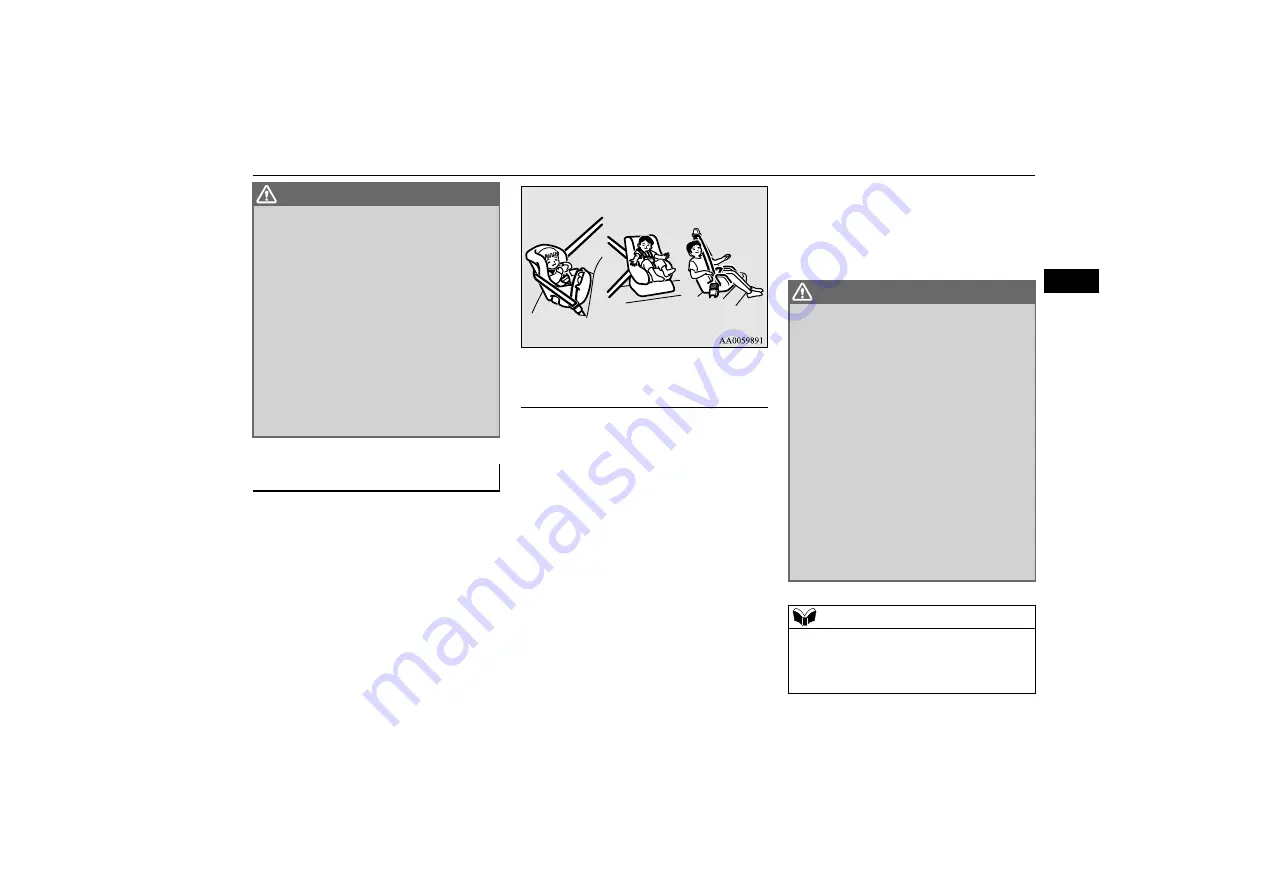
Child restraint
Seat and seat belts
4-21
4
E00406602283
When transporting infants and small children
in your vehicle, follow the instruction given
below.
For small infants, an infant carrier should
be used. For small children whose height
when seated allows the shoulder belt to lie
in contact with the face or the throat, a
child seat should be used.
The child restraint system should be
appropriate for your child’s weight and
height and properly fit the vehicle. For a
higher degree of safety: THE CHILD
RESTRAINT SYSTEM SHOULD BE
INSTALLED IN THE REAR SEAT.
Before purchasing a child restraint sys-
tem, try installing it in the rear seat to
make sure there is a good fit. Because of
the location of the seat belt buckles and
the shape of the seat cushion, it may be
difficult to securely install some manufac-
turer’s child restraint systems.
If the child restraint system can be pulled
forward or to either side easily on the seat
cushion after the seat belt has been tight-
ened, choose another manufacturer’s child
restraint system.
WARNING
A REARWARD FACING CHILD
RESTRAINT must NOT be used in the
front passenger seat if the front passen-
ger’s airbag has not been deactivated. The
force of an inflating airbag could kill or
cause serious injuries to the child. A rear-
ward facing child restraint should be used
in the rear seat.
A FORWARD FACING CHILD
RESTRAINT should be used in the rear
seat whenever possible; if it must be used
in the front passenger seat, turn off the
front passenger’s airbag ON-OFF switch.
Failure to do so could kill or cause serious
injuries to the child.
Infants and small children
Instruction:
WARNING
When installing a child restraint system,
refer to the instructions provided by the
manufacturer of the restraint system.
Failure to do so can result in severe or
fatal injury to your child.
After installation, push and pull the child
restraint system back and forth, and side
to side, to see that it is positively secured.
If the child restraint system is not installed
securely, it may cause injury to the child
or other occupants in the case of accident
or sudden stops.
When the child restraint system is not in
use, keep your child restraint system
secured with the seat belt or remove it
from the vehicle in order to prevent it
from being thrown around inside the vehi-
cle during an accident.
NOTE
Depending on the seating position in the
vehicle and the child restraint system that
you have, the child restraint can be attached
using one of the following two ways:
















































